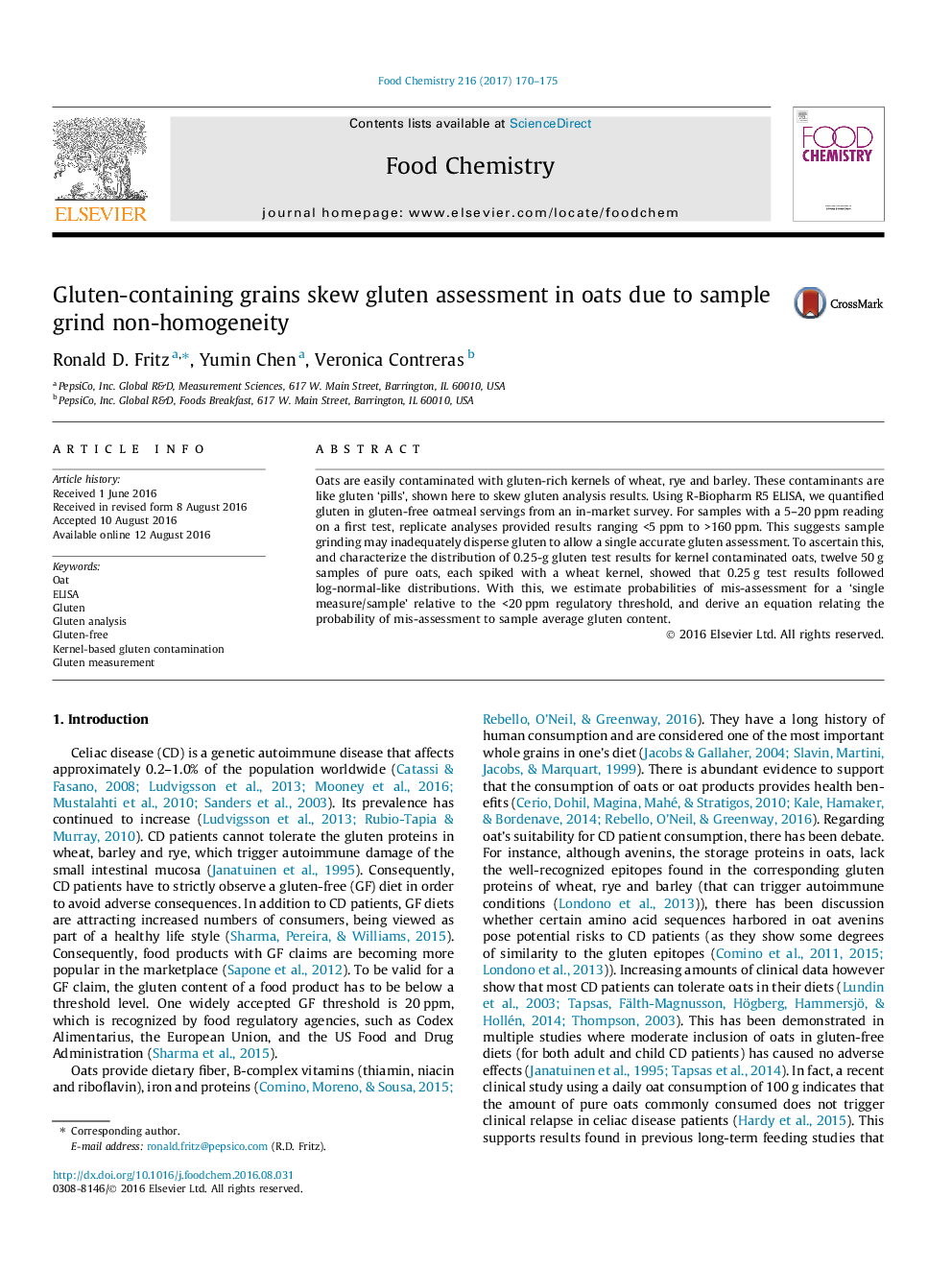| Article ID | Journal | Published Year | Pages | File Type |
|---|---|---|---|---|
| 1183063 | Food Chemistry | 2017 | 6 Pages |
•Kernel-based gluten contamination in oats skews gluten analysis results.•Grinding inadequately disperses gluten to allow a single accurate analysis.•Lognormal distribution of the test results renders a single test unrepresentative.
Oats are easily contaminated with gluten-rich kernels of wheat, rye and barley. These contaminants are like gluten ‘pills’, shown here to skew gluten analysis results. Using R-Biopharm R5 ELISA, we quantified gluten in gluten-free oatmeal servings from an in-market survey. For samples with a 5–20 ppm reading on a first test, replicate analyses provided results ranging <5 ppm to >160 ppm. This suggests sample grinding may inadequately disperse gluten to allow a single accurate gluten assessment. To ascertain this, and characterize the distribution of 0.25-g gluten test results for kernel contaminated oats, twelve 50 g samples of pure oats, each spiked with a wheat kernel, showed that 0.25 g test results followed log-normal-like distributions. With this, we estimate probabilities of mis-assessment for a ‘single measure/sample’ relative to the <20 ppm regulatory threshold, and derive an equation relating the probability of mis-assessment to sample average gluten content.
